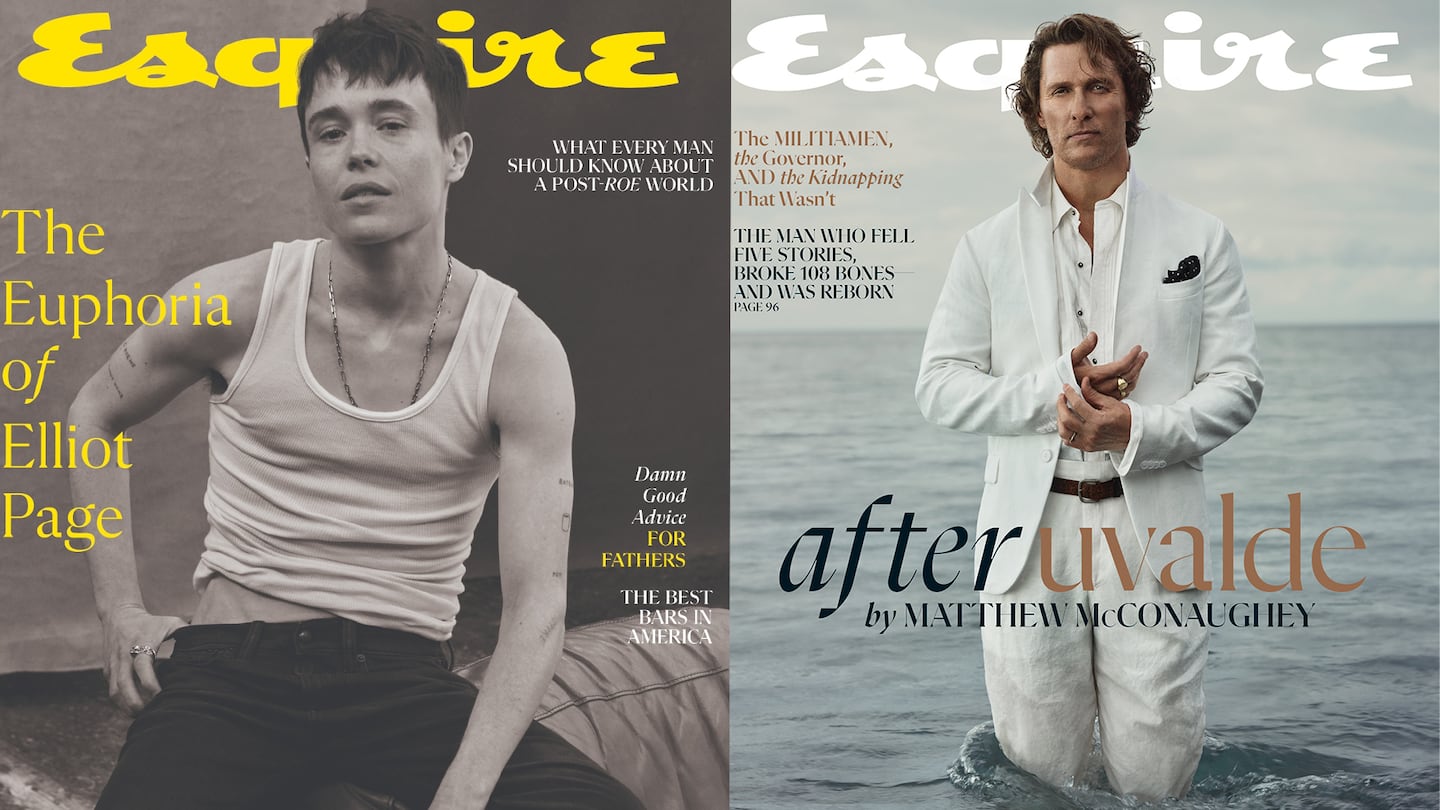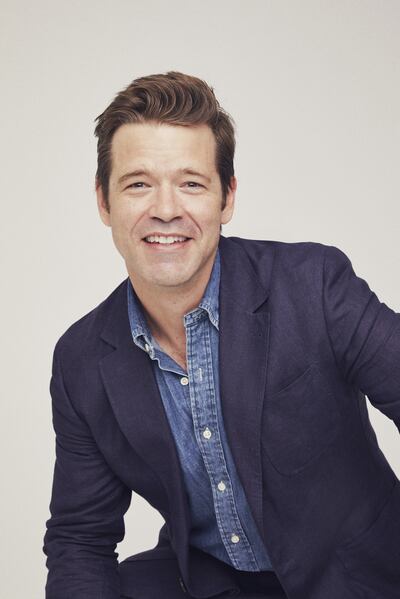
The Business of Fashion
Agenda-setting intelligence, analysis and advice for the global fashion community.

Agenda-setting intelligence, analysis and advice for the global fashion community.

When Esquire editor-in-chief Michael Sebastian was appointed to the top job at the storied men’s media brand in 2019, it was, he admits, “feeling a little dusty.”
“If you asked somebody on the street who the Esquire guy is, the answer would have been, ‘He’s a rich white dude who likes Dickens, whiskey and leather chairs,’” Sebastian told BoF in a conference room at Hearst Tower last month. “We want that guy to be a reader. But at the same time, we want to just expand and diversify, who is in the magazine, on the cover, writing for us, reading the magazine, and so on.”
That change feels urgent in 2022. The pandemic brought forth an international reckoning (particularly in the United States) around racism. Gen-Z has come into their spending power, wrestling the generational spotlight away from Millennials. Most recently, the Supreme Court’s overturning of Roe v. Wade in June has revived conversation around a man’s role in fighting for gender equality.
Since he began his editorship, Sebastian has tried to usher in Esquire’s modern era. He’s brought on new writers like Pulitzer Prize winner Mitchell S. Jackson, who wrote a profile of Supreme Court justice Clarence Thomas for the magazine’s September issue. He’s tried to challenge the idea of who the Esquire man is through the magazine’s cover subjects: Summer 2022 issue star Elliot Page was the first transgender man on the magazine’s cover.
ADVERTISEMENT
From a business perspective, the strategy appears to be paying off: Esquire has seen increased print and digital revenue, with combined ad revenue up 44 percent over 2021.
But it will take more to make the case for a print magazine in 2022, or for Esquire’s decades-long history as a bastion of literary journalism with a male point-of-view to work for its brand, rather than feel like a relic. Its record is mixed on that front: In 2022, all-access subscriptions are up by 14 percent. But online traffic is declining, according to media measurement company ComScore (Hearst’s internal numbers show a 10 percent year-over-year increase in visitors in September) and Esquire has yet to find its voice on TikTok.
“The cigar-smoking, tweed-jacket-wearing lobby that Esquire once built its reputation [on] often isn’t going to fly at this stage of the 21st century,” said Charles Whitaker, dean of the Medill School of Journalism at Northwestern University. “That was its identity, its niche. But the audience that it used to cater to is so mocked to a certain extent, is not quite as valued as it once was, so now it is looking to be a more contemporary brand.”
Heading into the magazine’s 90th anniversary year, Sebastian is looking to continue its expansion to new audiences, as the publication grapples with how to define masculinity for the 2022 reader and further integrates its print and digital products.
“It all boils down to refreshing … the content itself, just being more in tune to what today’s guy is interested in, wants to read about, the kind of fashion that they want to see, but not departing from what the DNA of the brand is, either,” he said.
In the editor-in-chief role, Sebastian succeeded Jay Fielden, a print veteran who led Town & Country and Men’s Vogue. He was with the brand for less than four years and is best remembered for a killed story that documented allegations of sexual misconduct against director Bryan Singer. The bigger shoes to fill are that of David Granger, the magazine’s legendary editor-in-chief of 19 years.

Sebastian is a product of Hearst Digital, first running news coverage across the company’s properties and then as digital director at Esquire. Under him, Esquire’s website became the largest men’s media platform online When Troy Young, Hearst’s former digital president, was promoted to president in 2018, several of the company’s print old guard left, replaced with more digital-savvy editors, like Sebastian (Young himself resigned in 2020 following misconduct allegations published in a New York Times report).
Sebastian had proven he can attract eyeballs; his next task was to bridge the print and digital gap.
ADVERTISEMENT
“The first year and a half was challenging,” he said. “Figuring out who this guy is, what he wants, how we’re going to appeal to him, and really setting into motion a plan that addresses that.”
The median age for both Esquire magazine and Esquire.com are the same — 45 — though the site’s average household income is just over half of the magazine, at $102,000 versus $200,000. Both are important to the brand’s bottom line. “Advertisers still think they want that guy, so they’re not chasing that guy away with a stick,” said Whitaker of the publication’s longtime print reader. “But there is an effort also to try to chase the Gen-Z guy as well, the folks who are setting trends. That’s a difficult needle to thread.”
The events of 2020 further exacerbated the need for modernisation — while honouring its heritage. In the aftermath of George Floyd’s murder, Esquire lean on its archives. In June 2020, a 1968 interview with writer James Baldwin on race relations in the US following the death of Martin Luther King Jr. saw a spike in reader interest. But it brought in new stories, too: In February, the magazine published a nearly 5,000 word investigation into police corruption in Mount Vernon, New York.
“We want to take somebody who is a celebrity ... and then they land on the Esquire cover and it’s like ‘Shit, that’s iconic.’”
The magazine’s cover has been another important tool. Putting Page on the cover, for example, was a decision that got some backlash from a subgroup of readers, but Sebastian felt it was essential to push the publication forward. In the September 2022 issue, Kid Cudi opened up about being on the other side of Ye’s (the artist formerly known as Kanye West)’s online abuse, while on the October 2022 cover, Matthew McConaughey discussed healing and action after the mass shooting in Uvalde, Texas.
“We want to take somebody who is a celebrity who for the most part people don’t necessarily think of as an icon,” said Sebastian, noting that there are exceptions, like November 2021 cover star Keanu Reeves. “They’re very popular, people have seen that person a million times and they’re really interested in them. And then they land on the Esquire cover and it’s like ‘Shit, that’s iconic.’”
Men’s fashion coverage has long been more closely associated with Esquire’s top competitor, Condé Nast-owned GQ. But Esquire found ways to make fashion a lucrative segment too: Online, e-commerce, shopping-oriented content is the priority, and e-commerce revenue is up 60 percent through the first half of this year. In print, fashion is most often on display alongside an interview with a talked-about man of the moment, like “Euphoria” star Jacob Elordi.
The hope is to create synchrony across Esquire’s platforms, said Hearst Magazines chief content officer Kate Lewis.
“Print feels accessible in ways perhaps it hadn’t before,” she said. “The digital brand feels ambitious in ways that it hadn’t before.”
ADVERTISEMENT
There’s mixed messages that these strategies are working. According to media measurement company ComScore, the magazine’s website has seen declines in online traffic — though that is standard throughout the industry — but has held its own against GQ, with 10.6 million readers in July 2022 versus GQ’s 9.5 million. Esquire has already eclipsed last year’s total in digital ad revenue, and print revenue is pacing 23 percent ahead of where it was last year.
Going forward, Esquire is prioritising growing its digital subscriber base, which has primarily been focussed on politics in the past. It offers a politics-exclusive subscription, called Esquire Select, featuring the work of its longtime political writer Charles P. Pierce, as well as a subscription that offers access to its archive, called Esquire Classic. Since Sebastian started as editor-in-chief, the subscription price has risen to $40 annually for an all-access subscription, a comparatively high number compared to its competitors. (GQ is $25, with a $15 promotion for its first year.) Its digital subscriber base has grown 26 percent over the past year.
“We have work to do to expand [membership], to make more people feel like they want to be subscribers and committed to the brand,” said Lewis. “That will be a big area of focus for him, creating what he’s done in print, where he’s pulling every lever, doing that for an audience that’s committing to a digital membership as well.”
Publications that have managed to build successful subscription programmes, like the New York Times, do both heavy and lighter-weight coverage. While Esquire’s literary journalism muscle remains strong, it still is endeavouring how to balance that with the sort of short-form, snappy content that resonates with digital audiences. (Esquire is on TikTok, where it has just over 101,000 followers and predominantly publishes celebrity interview clips.)
“The New Yorker has figured out how to keep the old audience with the text product and the new audience with the Borowitz Report and more online fun,” said William McKeen, professor and chairman, of the Boston University department of journalism. “I don’t know that Esquire has done that yet.”
The race to dress fashion’s biggest stars has gotten tighter — and brands are deploying fresh, social media-friendly tactics to generate buzz.
The Business of Fashion is seeking candidates for a six-month, part-time, paid reporting fellowship with our editorial team, designed to empower aspiring Black journalists.
The stylist is set to unveil a bi-annual print magazine and digital platform, with a team that includes Holly Shackleton and Fran Burns.
Luxury book publishers — and husband and wife — Prosper and Martine Assouline join BoF founder and editor-in-chief Imran Amed to discuss the genesis of their publishing business and how they are growing it into a global lifestyle brand.